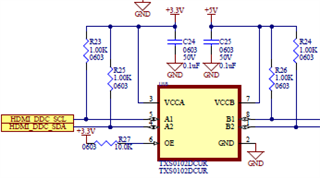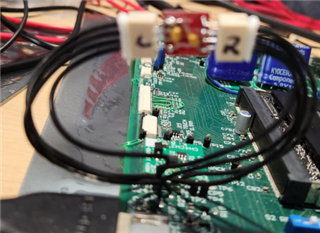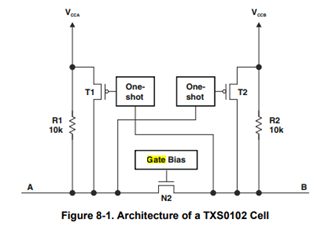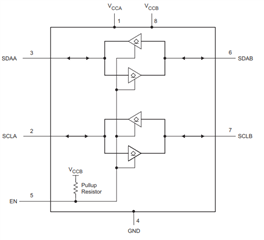Other Parts Discussed in Thread: TXS0102, , TCA9617B,
Tool/software:
I have a simple application of TCA9x17 where TCA9517 is not working but TCA9617 is. The A side is an iMX8 processor on a SoM and the B side is an HDMI I2C port (to determine the unique parameters of the display, etc.). With the display plugged in SCLB is stuck at a low voltage and SDAB is not switching. With the display unplugged the SCLB and SDAB signals are switching as expected. I am replacing TXS0102 that I also had trouble with. I started with a reference design specifying 1k pullups on both sides but it didn't work until I removed the pullups altogether, and the circuit worked on the reference design with 1k pullups installed. For TXS0102 the pullups are unnecessary as noted in the datasheet and, even with 1k pullups the waveforms looked fine aside from the absence of an ACK. Presently the pullups are 1k due to the reference design ultimately will be adjusted per 3mA current limit.






